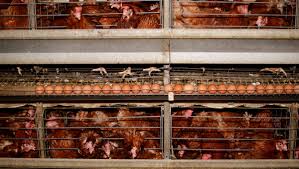The Indian poultry industry is set to witness a decline of approximately 50 basis points in operating profitability in the upcoming fiscal year, largely driven by escalating feed costs, according to a recent report by Crisil Ratings. Despite strong demand fueling revenue growth of 8-10%, rising costs of maize and soya are expected to compress profit margins.
However, the report assures that the credit profiles of poultry companies are likely to remain stable. This stability is attributed to controlled capital expenditures, limited debt accumulation, and steady cash flows. An analysis of 30 Crisil-rated poultry firms, collectively generating around ₹10,000 crore in revenue last fiscal, indicates that the profitability gains observed over the past two years—due to declining feed prices—are set to narrow as feed costs rise.
Impact of Rising Feed Costs
Soya, which comprises about 30% of total feed costs, experienced price declines over the last two fiscal years due to bumper crop yields. However, with soya acreage expected to shrink, prices are predicted to rise in the next fiscal, said Jayashree Nandakumar, director at Crisil Ratings.
Similarly, maize, which constitutes around 60% of poultry feed costs, is becoming more expensive due to its rising demand for ethanol production. The procurement price of maize has surged from ₹1,962 per quintal in fiscal year 2023 to ₹2,090 in fiscal year 2024, and further to ₹2,225 in fiscal year 2025, according to data from Statista.
Revenue Growth Amid Challenges
Despite these cost pressures, revenue growth in the poultry sector remains robust, supported by increasing domestic consumption of broiler chicken and eggs. Per capita poultry consumption in India is still below the global average, leaving ample room for expansion, fueled by changing dietary preferences, higher disposable incomes, and urbanization.
According to Rishi Hari, associate director at Crisil Ratings, strong demand and rising feed costs will drive an overall realization growth of 4-5% in the poultry industry next fiscal.
“The average price of broiler chicken per kilogram is expected to rise by 3-5%, while the price of a dozen eggs will see an annual increase of 2-4%,” Hari stated.
Strategies for Cost Management
With rising feed costs, poultry companies are expected to maintain larger inventories during the harvest season, slightly increasing their gross current assets to 60-65 days. However, post-pandemic capacity expansions have ensured adequate buffer stocks, reducing the need for major debt-funded investments.
As a result, key financial indicators remain steady, with interest coverage ratios expected to be around 3.1-3.5 times and gearing ratios maintaining a stable level of approximately one time.
Industry Challenges and Future Outlook
Despite a stable outlook, volatility in feed prices, fluctuations in poultry rates, and the looming risk of bird flu remain significant concerns. However, experts believe that expanding poultry farms, modernizing production facilities, and adopting efficient production techniques will continue to drive poultry meat production growth.
“The sector’s expansion will depend on demand patterns, technology adoption, government policies, and feed availability. There is also a pressing need for investment in cold chain infrastructure and high-capacity processing plants that meet international standards,” said Ricky Thaper, joint secretary of the Poultry Federation of India.
Additionally, the shift towards ethanol production from maize could impact domestic supply, affecting both the poultry and biofuel industries. To mitigate this, India must explore options such as allowing GM maize imports and increasing domestic production capacity.
As the poultry sector navigates these challenges, strategic investments and policy measures will play a crucial role in sustaining growth while managing cost pressures.
